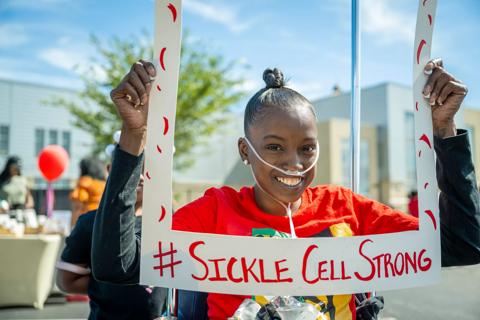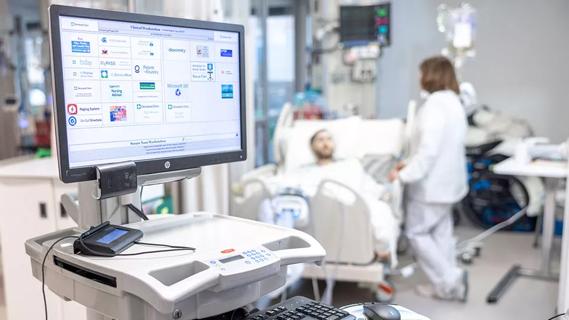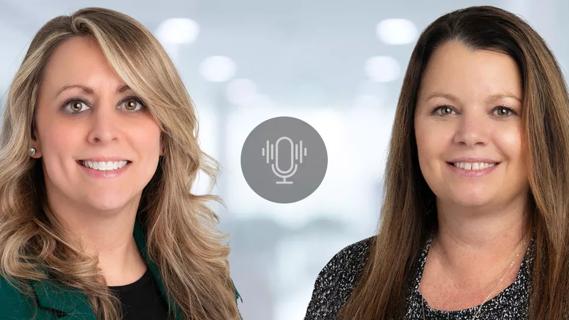
When considering pressure ulcers, people typically think about elderly patients or adults with paralysis. Children don’t often come to mind. “When I was a staff nurse, I found there wasn’t a whole lot of focus on pressure ulcers in the pediatric population,” says Maureen Washock, BSN, RN, CPN, now a clinical instructor with Cleveland Clinic Children’s. “That’s because when you look at our numbers compared to the adult side, we almost did not have any.” But the complications from pressure ulcers in children are just as serious.
Cleveland Clinic is a non-profit academic medical center. Advertising on our site helps support our mission. We do not endorse non-Cleveland Clinic products or services. Policy
Take the 14-year-old boy waiting for a heart transplant. He was cachectic and subject to skin breakdowns. When he was admitted to Cleveland Clinic Children’s, he had a stage IV coccyx pressure ulcer that required a wound vacuum-assisted closure (VAC) dressing. The open wound took six weeks to heal, during which time he was off the transplant list. “The day he came off the vac dressing is the day he got his heart,” recalls Washock.
Patients such as this are the reason she started a Pediatric Skin Care Resource Nurse group a few years ago as an offshoot to Cleveland Clinic’s Skin Care Resource Nurses. Interested nurses from all units at Children’s participated in initial training offered at main campus. They attend monthly meetings that include education geared toward the pediatric population and a review of hospital-acquired pressure ulcer (HAPU) data from pediatric units. “We create action plans and education for our nursing staff based on those issues and numbers,” says Washock.
The Pediatric Skin Care Resource Nurses at Children’s are part of a larger collaborative, the Children’s Hospitals’ Solutions for Patient Safety. This network of more than 80 hospitals nationwide examines several hospital-acquired conditions, including HAPUs, catheter-associated urinary tract infections (CAUTI), central line-associated bloodstream infections (CLABSI), falls and ventilator-associated pneumonia (VAP). Skin care nurses at Cleveland Clinic Children’s enter information into a database to help the collaborative create evidence-based practice guidelines on HAPUs.
Based on its pediatric population, Children’s has created its own skin care bundle audit. Nurses check that these five standards are met:
Creating unit-based experts has “put skin care on the radar,” says Jane Hartman, MSN, RN, CPNT, a pediatric clinical nurse specialist. “The nurses are very aware of skin care issues, the importance of maintaining skin integrity and what their role is in doing that.”
When Cleveland Clinic Children’s implemented the skin care bundle audits, it realized many of its patients’ pressure ulcers were device-related. “One misplaced wire can cause a lot of damage,” says Hartman. One young girl got a pressure ulcer from lying on tracheostomy ties. Another patient had a pressure ulcer from epidural tubing that was taped incorrectly on his back. “Pressure ulcers are a problem,” says Hartman. “It doesn’t matter if you are a day old or 100 years old.”
The Pediatric Skin Care Resource Nurses group has shared its message with all healthcare professionals in the hospital and at national conferences. The group held a skin care fair at Children’s. Nearly 100 nurses, PCNAs and physicians attended. Jennifer Baracz, BSN, RN, CPN, a staff nurse and Skin Care Resource Nurse, presents a skin care session during pediatric nursing orientation. And Washock, Hartman and Baracz teamed up earlier this year for a podium presentation on skin care at a national pediatric conference.

Outreach programs support residents, build relationships

Cleveland Clinic’s Executive CNO reflects on the image of nursing, aspirations for nurse leaders and more

Advice for preventing the negative physical and mental effects of sleep deprivation

Leadership rounds educate nurses and foster teamwork

Phone triage system reduces call backs and delays in care

Nurses play key role in comprehensive lifetime treatment program

Customized bots improve speed, efficiency by streamlining daily clinical, clerical tasks

Nurses play pivotal role in patients’ ability to recover in the comfort of their own homes